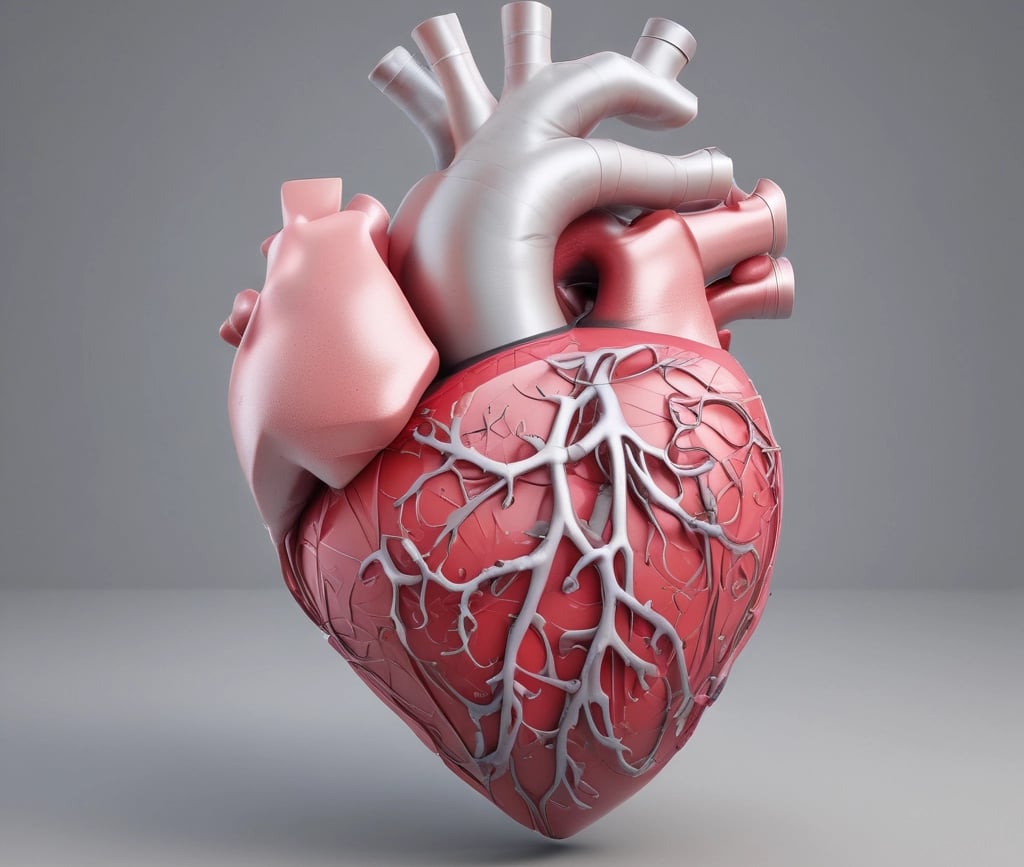Heart Health 101: Understanding Cardiovascular Disease in the US
In this post, we will delve into the nature of CVD, its widespread prevalence across the United States, the contributing risk factors, recognizable symptoms, and actionable strategies for prevention and management.
CARDIOVASCULAR DISEASEHEART DISEASE
Richard Stang RCS, RVS
3/24/20253 min read


Heart Health 101: Understanding Cardiovascular Disease in the US
Every 33 seconds, someone in the United States dies from cardiovascular disease. That’s a staggering statistic, but it’s not merely a figure—it’s a compelling call to action. Understanding cardiovascular disease (CVD) is the foundational step toward prevention and improved well-being.
TL;DR: Cardiovascular disease (CVD) impacts millions in the U.S., claiming lives every minute due to heart and blood vessel issues. Driven by factors like smoking, poor diet, and family history, it shows up through symptoms like chest pain or sudden numbness. Fight back with healthy living, medical support, and quick action—your heart’s worth it.
In this post, we will delve into the nature of CVD, its widespread prevalence across the United States, the contributing risk factors, recognizable symptoms, and actionable strategies for prevention and management.
What is Cardiovascular Disease?
Cardiovascular disease (CVD) refers to a spectrum of disorders affecting the heart and blood vessels, encompassing conditions such as coronary heart disease, heart failure, and stroke. These ailments can precipitate severe health consequences, including myocardial infarctions—commonly known as heart attacks—and cerebrovascular accidents, or strokes. Grasping the breadth of CVD is vital, as it persists as a predominant contributor to illness and death nationwide.
Heart Disease: This category includes conditions where the heart’s functionality is impaired, manifesting as angina (chest pain), arrhythmias (irregular heart rhythms), or heart failure, in which the heart struggles to pump blood efficiently.
Stroke: A stroke occurs when cerebral blood flow is disrupted, either by an obstruction (ischemic stroke) or a ruptured vessel (hemorrhagic stroke), potentially impairing speech, mobility, or cognitive abilities.
Far from an abstract threat, CVD affects countless Americans daily. Acquiring a deeper understanding equips us to protect our health proactively.
How Common is CVD in the United States?
CVD is a pervasive public health issue in the United States, underscored by compelling statistics that illuminate its scope.
CVD Deaths in the US
Primary Cause of Mortality: Heart disease consistently ranks as the leading cause of death in the U.S., outstripping other major health concerns.
Annual Toll: The Centers for Disease Control and Prevention (CDC) reported that in 2022, approximately 702,880 Americans succumbed to heart disease.
Relative Impact: CVD claims more lives annually than cancer and
Prevalence Rates
Broad Reach: The American Heart Association estimates that nearly 48% of U.S. adults—almost half the population—contend with some form of CVD, including hypertension (high blood pressure).
Specific Disorders: Coronary heart disease affects millions, while strokes impact over 7 million individuals each year.
Ongoing Concern: Although prevalence has plateaued, the aging demographic ensures CVD remains a critical challenge.
Demographic Insights
Age: Risk escalates with advancing age, particularly among those over 65.
Gender: Men typically exhibit higher CVD rates, though women’s susceptibility surges post-menopause.
Race and Ethnicity: African Americans face disproportionately elevated rates of CVD compared to other groups.
Regional Trends: The Southeastern U.S., dubbed the “Stroke Belt,” experiences heightened incidence levels.
Risk Factors for CVD
Several elements heighten the probability of developing CVD, ranging from modifiable lifestyle choices to immutable genetic predispositions.
Lifestyle Influences
Tobacco Use: Smoking damages vascular integrity, markedly increasing heart disease risk.
Dietary Habits: Diets rich in saturated fats, trans fats, and sodium exacerbate CVD development.
Sedentary Behavior: Lack of physical activity stands as a significant, preventable risk factor.
Alcohol Intake: Excessive consumption elevates blood pressure, compounding other risks.
Medical Conditions
Hypertension: High blood pressure exerts undue strain on the cardiovascular system, raising the likelihood of heart attacks and strokes.
Diabetes: Poorly managed blood glucose levels impair blood vessels, doubling CVD risk.
Hypercholesterolemia: High levels of LDL (“bad”) cholesterol foster arterial plaque buildup, impeding circulation.
Obesity: Excess weight amplifies associated risks like diabetes and hypertension.
Genetic Contributions
Familial History: A direct relative with CVD may indicate a hereditary predisposition.
Inherited Disorders: Conditions such as familial hypercholesterolemia elevate cholesterol levels genetically.
Symptoms of CVD
Prompt recognition of CVD symptoms is essential for effective intervention. Below are key indicators to monitor:
Heart Disease Symptoms
Angina (chest pain or discomfort)
Dyspnea (shortness of breath)
Persistent fatigue or weakness
Stroke Symptoms
Sudden numbness, particularly unilateral
Confusion or comprehension difficulties
Slurred speech or articulation challenges
Dizziness or coordination loss
Urgent Action Required! If these signs emerge in yourself or others, seek immediate medical assistance. Delayed response can result in lasting harm.
Preventing and Managing CVD
Though formidable, CVD is largely preventable and manageable through deliberate efforts.
Lifestyle Adjustments
Nutritional Choices: Prioritize fruits, vegetables, whole grains, and lean proteins, while minimizing saturated fats, sodium, and sugars.
Exercise Regimen: Engage in at least 150 minutes of moderate aerobic activity weekly, such as brisk walking or cycling.
Smoking Cessation: Quitting can halve your CVD risk within a year.
Stress Reduction: Techniques like meditation or yoga can mitigate stress and lower blood pressure.
Medical Interventions
Pharmacotherapy: Medications such as statins (for cholesterol), beta-blockers (for blood pressure), or ACE inhibitors (for heart failure) may be prescribed.
Surgical Measures
Procedures: Advanced cases may necessitate angioplasty to clear blocked arteries or coronary artery bypass grafting to restore blood flow.
Conclusion: Empowering Your Heart Health
Cardiovascular disease poses a substantial challenge in the United States, yet it is not an inevitable fate. Through informed lifestyle changes, medical support, and vigilant symptom monitoring, individuals can markedly diminish their risk. Initiate change with manageable steps—enhancing your diet or boosting activity levels—and consult healthcare providers for tailored recommendations. For deeper insights, visit the American Heart Association.
Your heart underpins your vitality—act today to safeguard it.
